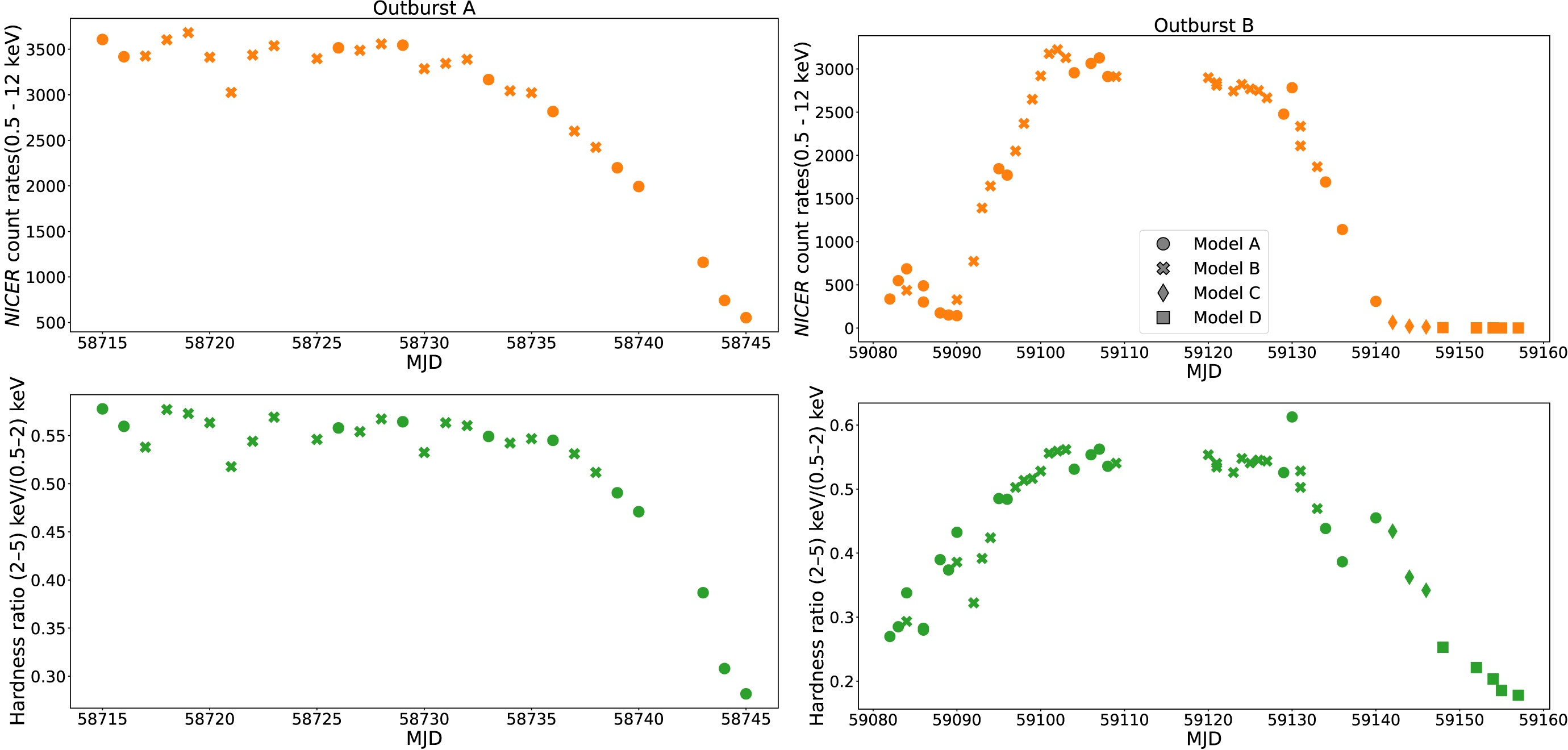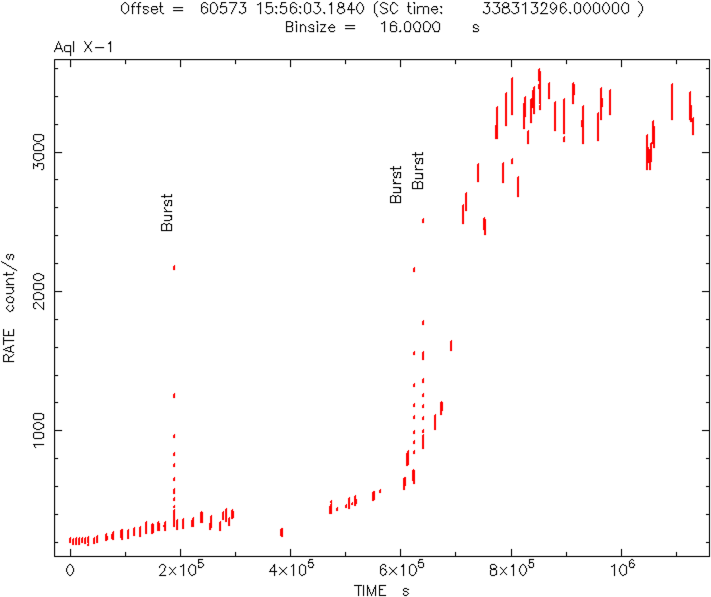NICER / ISS Science Nugget
for October 3, 2024
Aql X-1: Past and present accretion outbursts on display
A recent peer-reviewed paper - by K. G. Putha (Univ. of South Carolina) and collaborators in the UK journal Monthly Notices of the Royal Astronomical Society - describes outbursts of the accreting neutron-star binary Aquila X-1 observed by NICER in 2019 and 2020. Within a few weeks of its publication, Aql X-1 began its most recent outburst, which NICER is now tracking intensively.
Accretion outbursts progress through states that are named according to whether low- or high-energy (soft or hard) X-ray emission predominates, and their relative strength is quantified through a "hardness ratio" (simply the ratio of X-ray counts detected in higher vs. lower energy bands). NICER observed the entire 2020 outburst, start to finish, but only the high and declining portions of the 2019 outburst. The evolution of Aql X-1's spectrum across states carries information about how the accretion disk fills in as matter is transferred from the companion, how close the edge of the disk comes to the neutron star, when the hot-electron "corona" becomes important, and many other physical clues to the accretion process. For example, the presence of characteristic line emission from fluorescing iron, near 6.4 keV photon energy, can be attributed to "reflection," the illumination and stimulation of atoms in the disk by photons energized within the corona. NICER data from the past outbursts shows that reflection is present during most of the outburst but not at the start or end, presumably because the accretion is far from the hot corona in the vicinity of the neutron star. Similarly, some observations show excess absorption of low-energy X-rays, suggesting that in some circumstances Aql X-1 ejects matter in a "wind" that partially obscures our view of the inner accretion flow.
The current outburst of Aql X-1 has garnered significant attention from observers across the spectrum, and NICER is coordinating its observations with other space-based telescopes as well as ground-based radio and optical facilities.


Left: Two outbursts of the Aquila X-1 binary system, in 2019 (left) and 2020 (right), with NICER X-ray brightness (upper row) and hardness-ratio (lower row) measurements. Short-duration X-ray bursts have been removed for clarity. Symbol types represent different models required to fit the photon energy spectra of each day's observation; in order of increasing complexity, these are D: thermal emission from a multi-temperature accretion disk ("diskbb"), C: diskbb and a hot electron cloud that energizes thermal photons from the disk ("thcomp"), A: diskbb+thcomp and one spectral line, B: diskbb+thcomp and two independent spectral lines. The spectral lines accommodate the presence of emission from fluorescing iron and/or oxygen atoms. (Credit: Putha et al. 2024)
Right: Preliminary NICER measurements of X-ray brightness during the ongoing outburst of Aql X-1. Time offset is 20 September, 2024, at 15:56:03 UT. Narrow spikes are thermonuclear ("Type I") X-ray bursts are commonly seen from Aql X-1 during its outbursts.
<< Previous
Main Index
Next >>